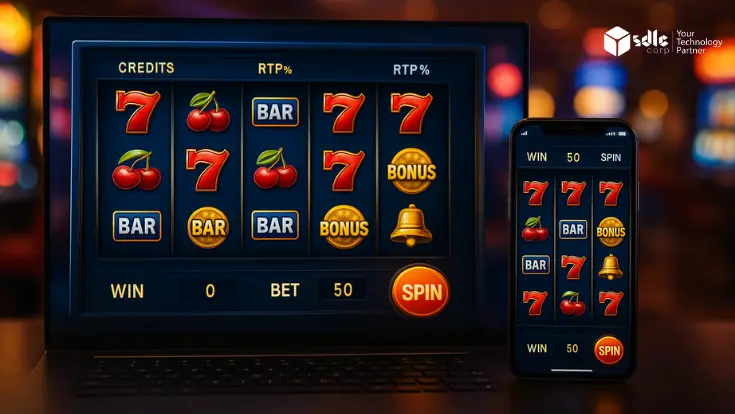Introduction
Game development is a complex process involving stages such as pre-production, production, and post-production. These stages require a significant amount of time, effort, and resources, and it is essential to have a clear understanding of the game development costs involved before embarking on any game development project.
In this blog article, we will look at the factors that influence game production costs and offer budgeting advice for your next game project.
Priority is Given to Planning Before Budgeting
To effectively develop budgets and schedules, you must have a basic understanding of project management. A game project requires the following project management tasks:
An innovative project manager will also do a thorough postmortem for future reference.
Plan Your Vision Scenario
First, prepare your game, thinking you have the best resources, whether they are or not. Later, compromise. Assume you can afford the best equipment, office, and workers. Design the best game from the start. You’ll wrangle figures and compromise later—right now, define the most excellent answers without boundaries, moving towards the ultimate ideal.
Project management starts with the highest ideal. This method makes unachievable goals possible. Aiming low will always be within the project’s initial standard benchmark, but aiming high may get you halfway there. An ideal aim can only be achieved with the examination. We will look at an example of this later. (Read more about How Do You Select the Best Game Development Company for Your Project?)
Budget smart for your next game project with us!

Put It On Paper
At this point, you should have a basic design paper for your game. Your title, genre, technology, and game scope notes are a code for your timetable and budget. A publisher can read the treatment and get a fair notion of what it will take to produce your title. They can then verify your evidence.
Warning
Your cover letter, design docs, and other selling documents tell the publisher what you’re proposing, and your budgets and schedules show whether you know what you’re doing.
Putting the timetable on paper will reveal relationships you didn’t see before and raise a million questions. You will only realize how much you have to accomplish if you write it all down in an organized manner. After allocating jobs, schedules and workflow overlap.
Pay attention to holidays, conventions, and other important events. On milestone days, even one-day events are essential. If a critical worker expects a holiday off, setting a milestone on a religious or national holiday may cause tension. Employee recruiting and management include holidays and days off.
Beginner Scheduling Mistakes
Begin The Procedure
Schedule chores first. Your developers will save time and money by using an existing engine and editing tools. However, you must program regardless of the toolset to make a great game. A game with switched assets will struggle in the publisher’s “potential title” category.
To become familiar with the tools and code base, you may need to finish a running demo if your team needs more project development experience. Can you determine if extra tools are required and how to write your game’s additional code? You should also know what the licensed technology has been used for, its support, improvements, and strengths and limitations.
Explore our other insights!

The Role of AI in Android Game Development
Introduction Artificial Intelligence (AI) has become a transformative force across numerous industries, and its impact on Android game

How AI and Machine Learning Are Shaping the Future of Slot Games ?
Introduction The world of gaming has undergone a seismic shift over the past decade, and few areas demonstrate
Game Development Outsourcing: Is It Right for Your Business?
Introduction Are you finding it challenging to keep up with the fast-paced demands of game development or struggling
Scheduling your game development involves four basic steps. They are as follows:
How to schedule work?
Developing a menu screen can be broken down like this:
- Menu Wallpaper Background
- Gather screenshots, photos, digital pictures, scans
- Initialize background Option Buttons
- Font Colour Scheme
After sorting this out, the artist will have many questions for numerous people, such as This game has how many options? More people means smaller fonts or more menus. Will I use a prepackaged typeface or a custom font, which takes longer?
Will the programmer bit fonts over menu options, or must I build them? Can the programmer adjust the images, or must I produce fonts in multiple resolutions?
You understand. This method yields resolution, colours, and file sizes.
This example is a menu screen, which may be essential for a 3D shooter yet complex and require numerous artists for an RPG with many menus and options. Note that a simple menu screen can take a week or more because the artist must receive feedback and examine various choices.
This shows the necessity of including the workers in these exercises. Without considering the project’s scope and interdependencies, it’s simple to underestimate the time a task will take. Breakdowns will change needs and functions.
The artist’s analysis of one easy operation shows how the designer, programmer, and possibly even the accountant will want to know, “What’s cheaper, buying a font package or spending days creating a font?”
Everyone must see and approve the WBS. A game can only be scheduled with everyone’s input. This technique also uncovers possible issues and generates creative solutions.
An artist may request a menu simulator to run art through it and see how it works. Programmers may refrain from adding this to their burden. Another team member may propose loading the screens in a drag-and-drop web layout program to view the menu rollover buttons and screen modifications. A site layout artist will benefit the gaming crew.
Estimating
Know that your schedule and budget are approximations. Budgets and schedules are never 100% accurate. You risk bad decisions when the project manager prioritizes budget and schedule correctness. Staying on budget or schedule is fine, but deciding to “hit the mark” can be difficult. You’ll still need to be accurate in your estimates.
Estimating shows scheduling variation, not shielding you from significant mistakes or ineptitude. This is frequently stated in a variable percentage of the time, money, or other resources. Explain your estimates and give a “freshness date.” Time may alter some of your calculations.
Plan your game project budget wisely. Let's guide you through!

Using A (WBS) to Plan Your Game
This post will cover the basic Gantt chart (Figure 1), a bar chart that helps you plan, document, and communicate with your team. In addition, project managers typically employ CPM or PERT. (Performance Evaluation and Review Technique). These methods are more detailed and will be used to construct the game.
Monitoring development sliding might be difficult. Every day a milestone slip adds a day to completion, delaying it. It’s easy to imagine you can burn the midnight oil or make it up later, but this rarely works, and slippage snowballs—psychological and actual impacts.
The team must constantly review and adjust project schedules. It’s hard, to be honest with yourself and especially with the publisher, but it’s better to acknowledge you’re a week or two behind than to announce a three-month delay near the end of development. If you allow this, the team and project leader will suffer mentally.
Everyone hates being overwhelmed by a seemingly complex task. Such conditions limit performance. When the publisher learns of the delay, they won’t be pleased.
They may drop you, sue you for the advance, and lose money since there may be no way to finish the game on time.
That’s accurate; if the publisher anticipated a million dollars from the title and you don’t deliver, they may sue you for that amount.
Weekly status meetings and brief updates on everyone’s progress can prevent this.
Complaints, recommendations, and mistakes can be addressed. No matter how hard a team communicates, things get misunderstood and crossed.
Communication differences between experts are an example.
Programmers may imply “a small file” as a 256×256 indexed-colour image, around 66KB. When told “a small file,” an artist may return with a 6MB file smaller than 60MB.
The Most Effective Method
Project management should prioritize finding the best way to finish the project, not scheduling. Project management generates scheduling, and it is about finding the best people and tools.
The game “Kiss Psychoo Circus” by Third Law Interactive uses Lithtech. Even though they could use any game engine or technology (Unreal, Quake, etc.), they chose the platform that would operate on most machines. In addition, they decided to make a game for serious and casual gamers.
Kiss has a large fanbase, but not all are computer gamers with the latest equipment. As a result, it may have been hard for the publisher to pass up an opportunity to promote the game using Unreal or ID technology, and only some creators would turn down the chance to use them.
Tips on Budgeting for Your Game Development Project
1. Plan Your Budget Early:
Before starting the development process, create a budget plan that includes all the costs involved in the project. This way, you can monitor your spending and control your finances more effectively.
2. Prioritize Features:
Identify the game’s core features and prioritize them based on importance. This will help you to allocate resources and time accordingly.
3. Consider Outsourcing:
Outsourcing certain aspects of the game development process, such as art and sound design, can be a cost-effective option. It can also help to reduce the workload on the in-house team.
4. Use Open-source Tools:
Consider open-source alternatives instead of investing in expensive game development tools. This can help to save costs without compromising on quality.
5. Test and Iterate:
Regular testing and iteration can help identify and fix issues early in development. This can prevent costly delays and ensure that the game is high quality.

Conclusion
Game development costs can vary widely depending on various factors such as platform, complexity, team size, development tools, and localization. However, by planning and budgeting carefully, prioritizing features, outsourcing certain aspects, using open-source tools, and testing and iterating regularly, you can ensure that your game development project stays within budget and delivers a high-quality game.
FAQs
1. What are the main things that affect how much it costs to make a game?
The size and complexity of the game are the primary determinants of game development costs, the platform(s) it will be released on, the level of graphics and art required, the number of team members involved, the time it takes to develop the game, and any marketing or promotion expenses.
2. How can I estimate the cost of developing my game?
You can estimate the cost of developing your game by breaking the project into components and assessing the time and resources required. You can also research industry averages and speak with game development professionals to better understand what to expect.
3. Should I budget for unexpected costs?
Budgeting for unexpected costs is always a good idea if something unexpected comes up during the development process. This could include additional development time, unforeseen legal or licensing fees, or unexpected marketing expenses.
4. Should I hire a game development team or work with freelancers?
Whether to hire a game development team or work with freelancers depends on the size and scope of your project and your budget. A game development team can provide a more cohesive and structured development process, which may be more expensive. On the other hand, freelancers can be more cost-effective but may require more management and coordination.
5. How can I reduce game development costs without sacrificing quality?
To reduce game development costs without sacrificing quality, consider outsourcing certain aspects of the development process, using pre-existing game engines or tools, limiting the game’s scope, or using open-source resources. You can also negotiate prices with contractors or hire from countries where labor costs are lower.



